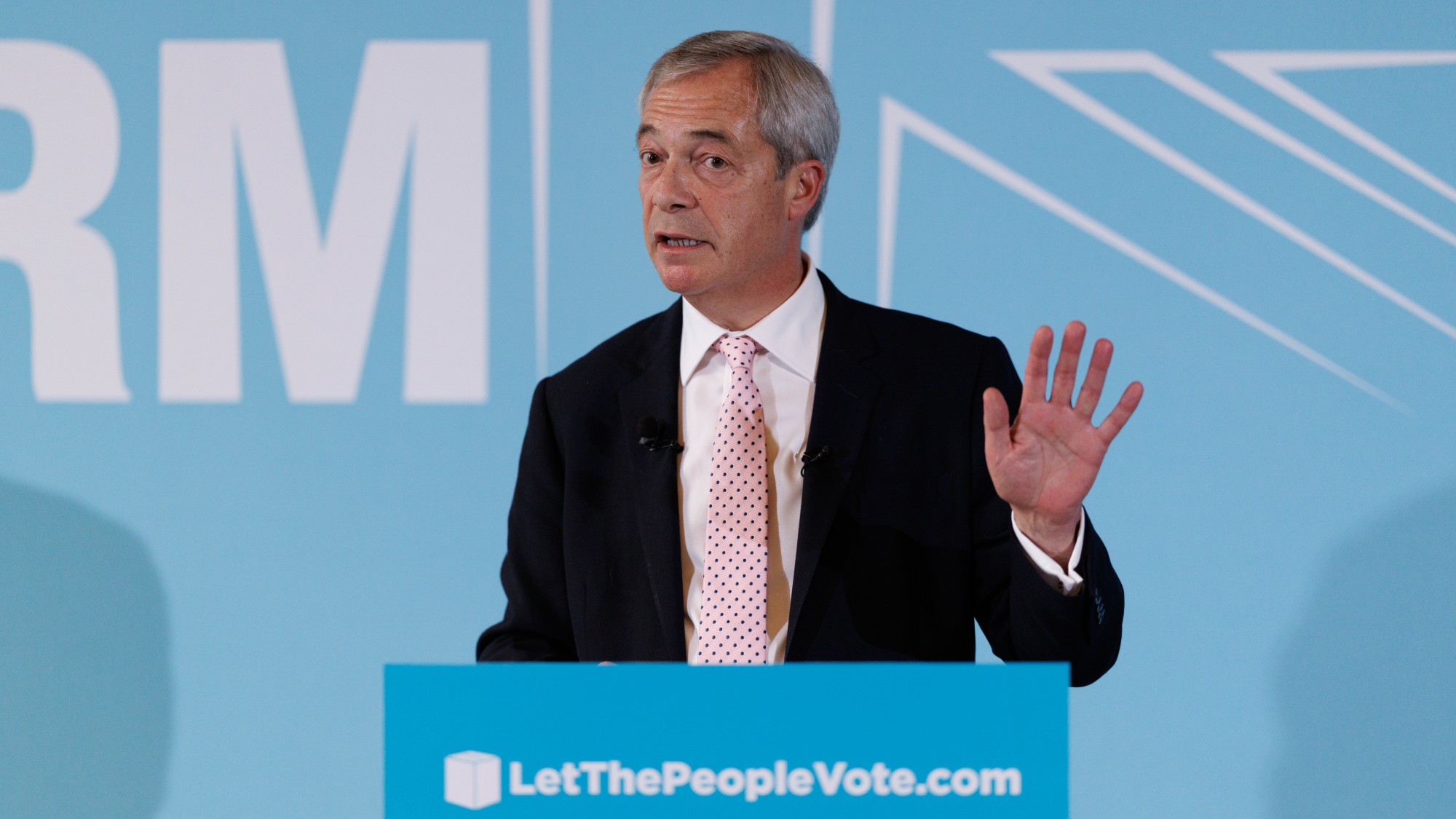7 animals that eat their own kind
Yum.

1. Sand tiger sharks
The animal kingdom is no stranger to cannibalism, which often manifests itself in brutally merciless ways. One of the most bloodthirsty examples is the sand tiger shark, in which large embryos feast on their puny siblings while still gestating in the womb. Scientists think the strategy allows a pair of baby sharks to grow large enough that other predators will leave them alone once they're born.
But new studies suggest that the eventual victors may be working in tandem. Mother sharks, it turns out, are capable of mating with more than one male at a time. And the newborns that emerge from pregnancy's version of the battle royale tend to be full-blooded siblings — meaning they have the same father. That effectively makes their smaller half brothers and sisters appetizers. How's that for filial loyalty?
The Week
Escape your echo chamber. Get the facts behind the news, plus analysis from multiple perspectives.

Sign up for The Week's Free Newsletters
From our morning news briefing to a weekly Good News Newsletter, get the best of The Week delivered directly to your inbox.
From our morning news briefing to a weekly Good News Newsletter, get the best of The Week delivered directly to your inbox.
2. Polar bears
Although it doesn't happen very often, polar bears have been spotted in recent years gruesomely feeding on their children in the wild. In 2011, for example, wildlife photographer Jenny Ross took snapshots of an adult bear tearing into the bloody carcass of a much smaller juvenile. Some climatologists think melting polar ice is impeding the predators' access to their favorite food — seals — turning them into cannibals out of necessity.
However, in 2008, a zoo in Nuremberg, Germany, reported that a mother polar bear had killed and eaten one of her twin cubs.
3. Spiders
A free daily email with the biggest news stories of the day – and the best features from TheWeek.com
Think dating's hard? At least you're not an arachnid. A range of female spiders, from the famous black widow to the ginormous wolf spider, are known to kill and eat smaller males after sex. According to LiveScience, "studies have suggested various complex evolutionary reasons involving costs and benefits to the species, sperm competition, and esoteric sexual selection schemes." Usually, though, it's because the baby mamas are famished, and the tiny males just happen to be the closest thing.
4. Hamsters
Sure, they're cute and cuddly, but it's not uncommon for a mother hamster to chow down on her newborn offspring. According to one hamster-raising website, the carnage could be driven by a need for extra protein while the mother is lactating, as well as a "human scent" left on the pups that confuses her into thinking the kids are breakfast. To avoid a killing spree that would traumatize your own young one, be sure to keep Mom adequately fed, and avoid touching the newborns with your bare hands.
5. Parasitic wasps
Skip this one if you're eating lunch: Copidosoma floridanum, a type of parasitoid wasp, has a disgusting way of reproducing. To breed, an adult wasp will seek out an unsuspecting caterpillar, paralyze it with her sting, and then inject one male egg and one female egg into the living body. Once inside, those eggs "clone" themselves until the still-alive caterpillar is teeming with hundreds of larvae. Strangely, about 50 of the females emerge with large jaws and no reproductive organs. Their sole purpose for living? To devour as many of their brothers as they can, since only a few males are needed to fertilize their sisters. Nature!
6. Chickens
Hens are known to sometimes eat their own eggs, especially if they're not getting enough calcium, which leads to thin shells. Farmers employ all sorts of techniques to keep this from happening, like planting inedible fake eggs, such as golf balls. So much for which comes first.
7. Tiger salamanders
These North American amphibians are particularly fascinating to researchers because they can take divergent developmental paths. Their larvae take on two different forms: One smaller variety feasts on aquatic invertebrates, while a much larger "cannibal morph larva" can — you guessed it — eat its non-cannibal morph brethren. A few scientists thinks the mutation is triggered by environmental factors, notes Backyard Zoologist, especially in places where tiger salamander populations are dense. The thinking goes that if there's already plenty of competition for food, why not evolve to go directly after the competition?
-
 Farage’s £9m windfall: will it smooth his path to power?
Farage’s £9m windfall: will it smooth his path to power?In Depth The record donation has come amidst rumours of collaboration with the Conservatives and allegations of racism in Farage's school days
-
 The issue dividing Israel: ultra-Orthodox draft dodgers
The issue dividing Israel: ultra-Orthodox draft dodgersIn the Spotlight A new bill has solidified the community’s ‘draft evasion’ stance, with this issue becoming the country’s ‘greatest internal security threat’
-
 Codeword: December 13, 2025
Codeword: December 13, 2025The daily codeword puzzle from The Week